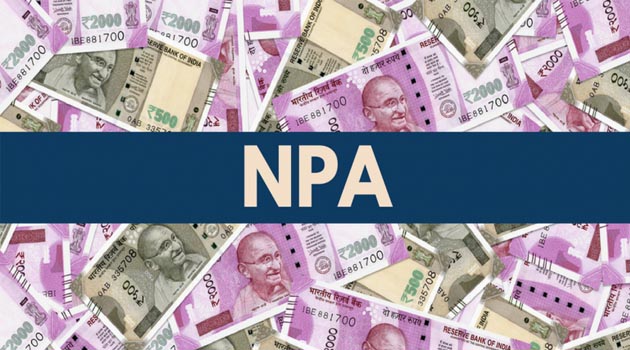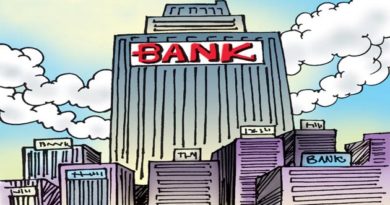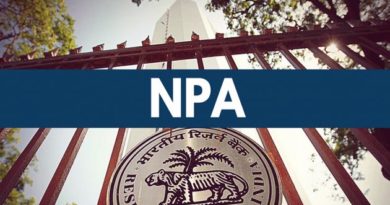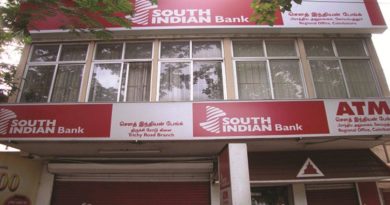Challenge of NPAs in the Indian Banking Sector
India has a long history of venerated banking system of over 200 years,in which banks have been playing a pivotal role in making financial sector strong and viable through sustainable pace of economic growth. Banking System in India is diverse and encompasses commercial banks, regional rural banks, urban cooperative banks, and primary agricultural credit societies. After independence, several changes have taken place in the banking sector right from government monitored policies to the breezing liberalized world of post 1991 period. But fact is that despite all these changes, role of banking in Indian Banking System remains unchanged. Apart from consistent changes in the financial sector, there have been two major catastrophes that banking system has faced; first one took place during 1997-2002 and the second one started after the Global financial crisis in 2008.
The Indian Banking sector encompasses both organized and unorganized sectors and yet after so many years of independence, a big chunk of rural populace is still under control of unorganized sector for their financial needs. Formal banking sector broadly consists of the commercial banks and co-operative banks. During pre-liberalization period (before 1991), 20 private sector banks had been nationalized in two phases to implement schemes that would benefit poor in the country. Post-1991 period is seen as change in hypothesis of Indian banking with different type of high-powered committees been constituted to bring in new era in the banking sector. The most admired amongst them was Narsimhan Committee (I & II), which had virtually changed the course of banking sector in India and introduced many far-reaching reforms in the sector including prudential norms for banks. Other banking sector reforms based on Narsimhan committee recommendations included interest rate deregulation, allowing public sector banks to raise up to 49% of their equity in the capital market and gradual reduction of SLR & CRR to improve profitability. After liberalization of financial sector in India, economic activities have increased manifold during the last three decades and the going strong. Presently we have 12 PSBs, 21 private sector banks in India along with 20 foreign also operating through their branches.
If we look on the volume of non-performing assets, we may come to know that in the year 1995, NPAs of PSBs were Rs 38385 Crores and for Private sector banks were Rs 6410 Crores, which reached to 71047 Crores and & 17791 Crores respectively in 2011. The PSBs posted combined losses of Rs.85,370 crores in 2017-18, Rs.66,636 crores in 2018-19, and Rs.25,941 crore in 2019-20, adding up to an aggregate of nearly Rs.1.78 lakh crore over those three years. NPAs on the books of banks have ballooned after the RBI issued new guidelines for asset quality recognition (AQR) in 2015. The ratio of NPAs to advances rose from 5 per cent in 2014-15 to a peak of 14.5 per cent in March 2018. Banks were forced to provide additional funds to cover for these bad assets as per RBI guidelines resulting in mammoth losses. Over 2017-18 to 2019-20, gross NPAs rose by Rs.59,107 crores, whereas net NPAs fell by Rs.1,13,572 crores. This means that provisions amounted to Rs.1,72,679 crore, compared with cumulative losses of Rs.1,77,947 crore recorded during the period. Clearly, provisioning played a role in generating the losses.
Burgeoning NPA
The lasting crisis in India’s banking system is largely due to the unprecedented accumulation of bad or non-performing loans. All banks, irrespective of their ownership have registered substantial volume of bad loans, though the incidence of NPA is prevalent in PSBs. The widespread prevalence of bad loans came to light with the conduct of asset quality review (AQR) in 2015 by the RBI. The ratio of NPAs to total advances (GNPA ratio) of scheduled commercial banks (SCBs) has risen significantly to a mammoth 11.2 percent in 2017–18 from a moderate NPA of 2.2 percent in 2007–08. The NPA figures of the PSBs increased significantly to 14.6 percent in 2017–18 from 2 percent in 2008–09. Between 2015 and 2018, there was a rapid increase in the NPA figures of PSBs and private banks. The NPA figures of PSBs rose to 14.6 percent in 2018 from 5 percent in 2015, which is almost three times higher. Similarly, the GNPA ratio of private banks increased to 5.45 percent in 2019–20 from 2.1 percent in 2015, which is more than double. As per the data, foreign banks recorded a rapid increase in their NPA figures beginning in 2013 (three percent) and reached its peak level (4.2 percent) in 2016. While the GNPA ratio of PSBs and private banks followed an upward movement beginning 2016, foreign banks witnessed a decline in their GNPA ratios.
The bank-wise analysis of NPA data of all PSBs shows that the GNPA ratios started increasing, beginning in 2011. Most of the PSBs recorded an increase in their GNPA ratios during that year. The GNPA ratios of UCO Bank, United Bank of India, Punjab National Bank, Oriental Bank of Commerce, and Central Bank of India were among the highest in this group in the years after 2011. The GNPA ratio of UCO Bank increased to 24.64 percent in 2018 from 3.73 percent in 2011. The GNPA ratio of United Bank of India increased to 24.10 percent from 3.41 percent, of Punjab National Bank to 18.38 percent from 3.15 percent, of Oriental Bank of Commerce to 17.63 percent from 3.17, and of Central Bank of India to 21.48 percent from 4.83 respectively during the same period. Large banks like the SBI also registered an increase in their GNPA ratio. During the same period, the GNPA ratio of SBI rose to 10.9 percent from 4.4 percent. Beginning in 2015, the GNPA ratio of almost all PSBs registered a rapid increase in bad loans. Bank group-wise distribution of NPAs suggests that PSBs constituted more than three fourths of the NPAs amongst the all banks in India at that point. The NPA share of PSBs declined to 75.7 percent in 2019–20 after the peak of 88.3 percent 2015–16. On the other side, the share of private banks in NPAs increased to 23 percent in 2019–20. Their NPA share increased rapidly to 23 percent in 2019–20 from 9.1 percent in 2015–16. The NPA shares of foreign banks have declined substantially in recent years. Their NPA share declined to 1.1 percent in 2019–20 from 4.4 percent in 2013–14.
Measures
The Government has introduced the “Indradhanush”, which is a seven-pronged plan in August 2015 to revamp the Public Sector Banks because thousands of crores of public money is at stake in these banks. One significant action has been taken by the Government under the Indradhanush Yojana to set up a Bank Board Bureau (BBB) to facilitate the appointment of top officials at the PSU Banks. As per the new framework of the Department of Financial Service, Ministry of Finance, the Bank Board Bureau (BBB) has been replaced with Financial Services Institutions Bureau (FSIB). Recognizing the severity of the NPA crisis, the Reserve Bank of India (RBI) initiated an Asset Quality Review (AQR) in 2015. Under the AQR, banks were required to classify stressed assets as NPAs and make provisions accordingly. This exercise brought greater transparency and revealed the true extent of the NPA problem, leading to a surge in reported NPAs.
One of the landmark reforms in the Indian financial sector was the introduction of the Insolvency and Bankruptcy Code in 2016. The IBC aimed to expedite the resolution of NPAs by providing a time-bound and creditor-friendly process. The National Company Law Tribunal (NCLT) and the Insolvency and Bankruptcy Board of India (IBBI) was established to oversee the insolvency proceedings. The IBC revolutionized the way NPAs were resolved, improving recovery rates and reducing the burden on the banking system. It is a big step in the right direction taken by the Government. It is designed to facilitate quick resolution of stressed corporate assets in a time bound and structured manner.
Since its inception in 2016, IBC has resolved Rs. 3.16 lakh crore of debt stuck in 808 cases in seven years, according to CRISIL. It has resolved a significant amount of stressed assets with better recovery rates compared to previous mechanisms like the Debt Recovery Tribunal, the Securitization and Reconstruction of Financial Assets and Enforcement of Security Interest Act, 2002 and Lok Adalat. IBC has achieved higher recovery rates, with creditors realizing 32% of admitted claims on average and 169% of the liquidation value. In contrast, other mechanisms had recovery rates ranging from 5-20%. IBC’s deterrent effect is evident as borrowers fearing the loss of companies have proactively settled over Rs. 9 lakh crores in debt before cases entered the insolvency process. This highlights a significant behavioral change among borrowers, showcasing the efficacy of the Insolvency and Bankruptcy Code in encouraging timely settlements.
Way back in the 20th century, to address the issue of stressed assets, the RBI has allowed the formation of Asset Reconstruction Companies (ARCs) in the late 1990s. ARCs act as specialized institutions that acquire NPAs from banks at a discounted value and attempt to recover them. The establishment of ARCs has provided an alternative mechanism for banks to offload NPAs and focus on their core operations. Despite the introduction of the insolvency code, banks are still reposing their faith in asset reconstruction companies (ARCs) and selling them a large chunk of their bad loans. Bankers assert that ARCs remain a viable option for recovery due to their ability to consolidate bad loans, save management time, and free up capital.Data from the ARC association reveals that the book value of bad loans acquired by ARCs has risen to Rs 756,090 crore in FY 2023, compared to Rs 509,228 crore in FY 2021. The previous year’s figure stood at Rs 577,807 crore.
In absolute terms, the book value of bad loans purchased by ARCs saw an increase of Rs 178,283 crore during FY 2023, representing a 31% growth in the outstanding amount. The ARC association’s data also indicates that the average pricing of non-performing assets (NPAs) sold by banks to ARCs has decreased from 35% to 32%, primarily due to the aging of NPA portfolios by the time they are sold. FY 22-23 also witnessed an upswing in cases falling under the Insolvency and Bankruptcy Code (IBC) as the one-year suspension during the COVID-19 pandemic was lifted, allowing for the admission of fresh insolvency cases. In FY 2022, admissions under the IBC rose by 65%. The RBI’s December 2022 report has stated that although the IBC mechanism accounted for the highest amount, the recovery rates from the Securitization and Reconstruction of Financial Assets and Enforcement of Security Interest Act (SARFAESI) and Debt Recovery Tribunals (DRTs) were comparable to the IBC mechanism.
The RBI has taken numerous measures to strengthen the regulatory framework for managing NPAs. It introduced the Prompt Corrective Action (PCA) framework in 2002, which aimed to impose restrictions on banks with weak financial indicators to prevent further deterioration. The RBI also issued guidelines on stressed asset resolution, loan classification, and provisioning norms, ensuring greater accountability and transparency in the banking sector. The objective of the PCA framework is to enable supervisory intervention at appropriate time and require the supervised entity to initiate and implement remedial measures in a timely manner, so as to restore its financial health. The PCA framework is also intended to act as a tool for effective market discipline. As many as 11 public sector banks were put under the prompt corrective action framework between 2017 and 2018 before the mega bank merger exercise; these were Allahabad Bank, Bank of India, Bank of Maharashtra, Central Bank of India, Corporation Bank, Dena Bank, IDBI Bank, Indian Overseas Bank, Oriental Bank of Commerce, UCO Bank and United Bank of India. They were taken out of PCA after they managed to contain net NPA below 6% and improved capital adequacy, albeit with the help of the government. Only Dena Bank and United Bank of India remained under the corrective and restrictive framework when they were merged with Bank of Baroda and Punjab National Bank
The Indian government launched a series of bank recapitalization programs to address the capital adequacy issues faced by banks burdened with NPAs. These initiatives infused significant capital into public sector banks, enabling them to write off NPAs and extend credit to productive sectors of the economy. The recapitalization efforts have played a crucial role in strengthening the financial health of banks and improving their ability to tackle the NPA problem. The central government invested Rs 3.31 lakh crore in public sector banks between FY 2017 and FY 2021 but is yet to do so since due to the institutions’ steadily improving financial condition. As of December 31, 2022, all PSBs have more than a 100-basis point cushion above the regulatory Tier I capital requirement. It is 10.8% for SBI, 12.6% for Bank of Baroda, 13.7% for Canara Bank, 11.6% for UCO Bank, 12.3% for Union Bank, and 13.5% for Bank of Maharashtra, and 13.6 per cent for Bank of India. Capital infusion into the banks, started in India in the 1990s when the Indian economy was on a downward growth trajectory. However, because of the trade-off between the fiscal deficit and the extent of capital infusion, there has been a limit to how much the Centre can infuse from the state coffers. According to media reports, this method invested as much as INR 20,000 crore into PSBs in the 1990s. In 1993-95, the then UPA government introduced recapitalization bonds to help distressed Indian banks.
Introduction of the “Bad Bank” marks a significant step in transforming the bad loan landscape in the Indian financial sector. By consolidating bad loans, leveraging specialized expertise, and adopting efficient resolution mechanisms, the “Bad Bank” aims at stabilizing the banking sector, facilitating credit flow, and reestablishing investor confidence. This NARCL-IRDCL structure aims to clean off the banking institutions’ bad liabilities and help clean up the bank’s balance sheets, strengthen banks’ financials and enhance recovery. Indian government has proposed the creation of a bank called the National Asset Reconstruction Company Limited (NARCL) or “Bad Bank” to tackle the issue of bad loans in the banking system. The proposed NARCL aims to acquire and manage stressed assets from public sector banks and facilitate their resolution.
Beacon of Hope
Gross non-performing assets (NPAs) of Indian banks are expected to fall to a decade low of 4 per cent by the end of fiscal 2023-24 from a peak of 11.5 per cent in March 2018,helped by a sharp improvement in the corporate segment, even though an industry study showed that the stressed loans to MSMEs are projected to remain elevated. NPAs in the corporate segment are estimated to fall to 2 per cent by the end of fiscal 2023-24 from a peak of 16 per cent as on March 31, 2018, according to a study conducted jointly by industry body Assocham and CRISIL Ratings. For banks, gross NPAs are expected to decline by 90 basis points (bps) year-on-year to 5 per cent this fiscal, and by another 100 bps to a low of 4 per cent by March 31, 2024, riding on the post-pandemic economic recovery and higher credit growth. This will be the lowest gross NPA level of Indian banks since 2013 when it stood at 3.40 per cent. As per the RBI data, the gross NPA of the Indian banks stood at 5.97 per cent in March 2022. The asset quality of the Indian banking sector started deteriorating from the early part of the last decade. The gross NPA of banks, which stood at 2.40 per in March 2011, surged to 11.50 per cent in 2018. The asset quality has improved gradually since 2018.
According the RBI’s Financial Stability Report released on June 28, 2023, Gross NPAs stood at 3.9 per cent in FY 2023, down from a high of 11.5 per cent in 2018, a significant drop in NPAs in the Indian banking sector, down to a 10-year low. The period also saw gross advances grow from Rs 83.6 lakh crores in 2018 to Rs 135 lakh crore in 2023. Therefore, the decrease in the percentage of Gross NPAs in relation to the increased base of advances may not tell the full story. Nonetheless, the decline in the Gross NPA percentage is a turnaround of sorts. The RBI report highlights this trend, stating: “The Indian financial system, led by a sound banking system, remains stable and supportive of the productive needs of the economy aided by robust earnings, adequate capital and liquidity buffers, and improving asset quality, Indian banks are well positioned to sustain the upturn in the credit cycle that has been underway since early 2022.” This was also the time when the economy was recovering from the effect of the pandemic and the government’s responses to it. A revival in spending allowed banks to expand their retail lending, where yields are higher and defaults much lower than in areas such as lending to infrastructure. The result of such trends was the turnaround and subsequent surge in profitability. Financial investors too responded positively to these developments. The total market capitalization of PSBs rose from Rs.4.52 lakh crore in March 2018 to Rs.10.63 lakh crore in December 2022.
Conclusion
We have discussed that few steps that have been taken to tackle the issue but it seems that these were not adequate and at the same time not in contour with the changes that have been taking place in the banking and Indian vis a vis world economy;apart from that lack of systematic approach from all quarters is the main reason for creating mountains of NPAs. NPAs have been eroding profitability of the banks as Indian Banks have traditionally been dependent on income from interest on lent fund, large number of credit defaults affects the profitability and net worth of the banks and also erodes the values of the assets. Higher NPAs of the commercial banks, both the public sector as well as private sector banks gives some indications regarding the state of the health of industry and trade and suggests need of policy change in this regard. Indian Banks, both PSBs and private banks have a great role to play in the development of Indian Financial System. These banks are the premier source of implementing flagship programs like Jan Dhan and financial inclusion as well as Digital India. Government cannot take risk to overlook the various issues, which presently Indian banks are facing, including NPAs. Government has taken view of all aspect related with problem of NPAs in the Indian Banking system in particular and in Indian economy in general. It is well known truth that the growth of NPAs has continuously been impeding profitability of Indian banks and is an area of great concern for both the management of these banks as well as for government also.
The NPAs of Indian Banking System in India has witnessed both evolution and revolution, driven by regulatory reforms, institutional mechanisms, and economic changes. The introduction of the IBC, establishment of ARCs, enhanced regulatory frameworks, and bank recapitalization programs have transformed the NPA resolution landscape. However, challenges such as the economic slowdown and the impact of the COVID-19 pandemic require continued efforts to strengthen risk management systems and governance practices. By addressing these challenges and leveraging the lessons learned, the Indian financial sector can navigate the path towards a more robust and resilient banking system, minimizing the impact of NPAs and fostering sustainable economic growth. To prevent the recurrence of NPAs, it is crucial to strengthen risk management systems and credit appraisal mechanisms. Banks need to focus on prudent lending practices, effective due diligence, and early identification of potential stressed assets. Embracing technology and data analytics can enhance the accuracy of credit assessments and risk monitoring. Ensuring sound corporate governance practices, independence of boards, and transparency in loan disbursement processes are essential in curbing the NPA problem. Stricter enforcement of regulations and deterrent action against willful defaulters can instill discipline and accountability in the financial ecosystem.




